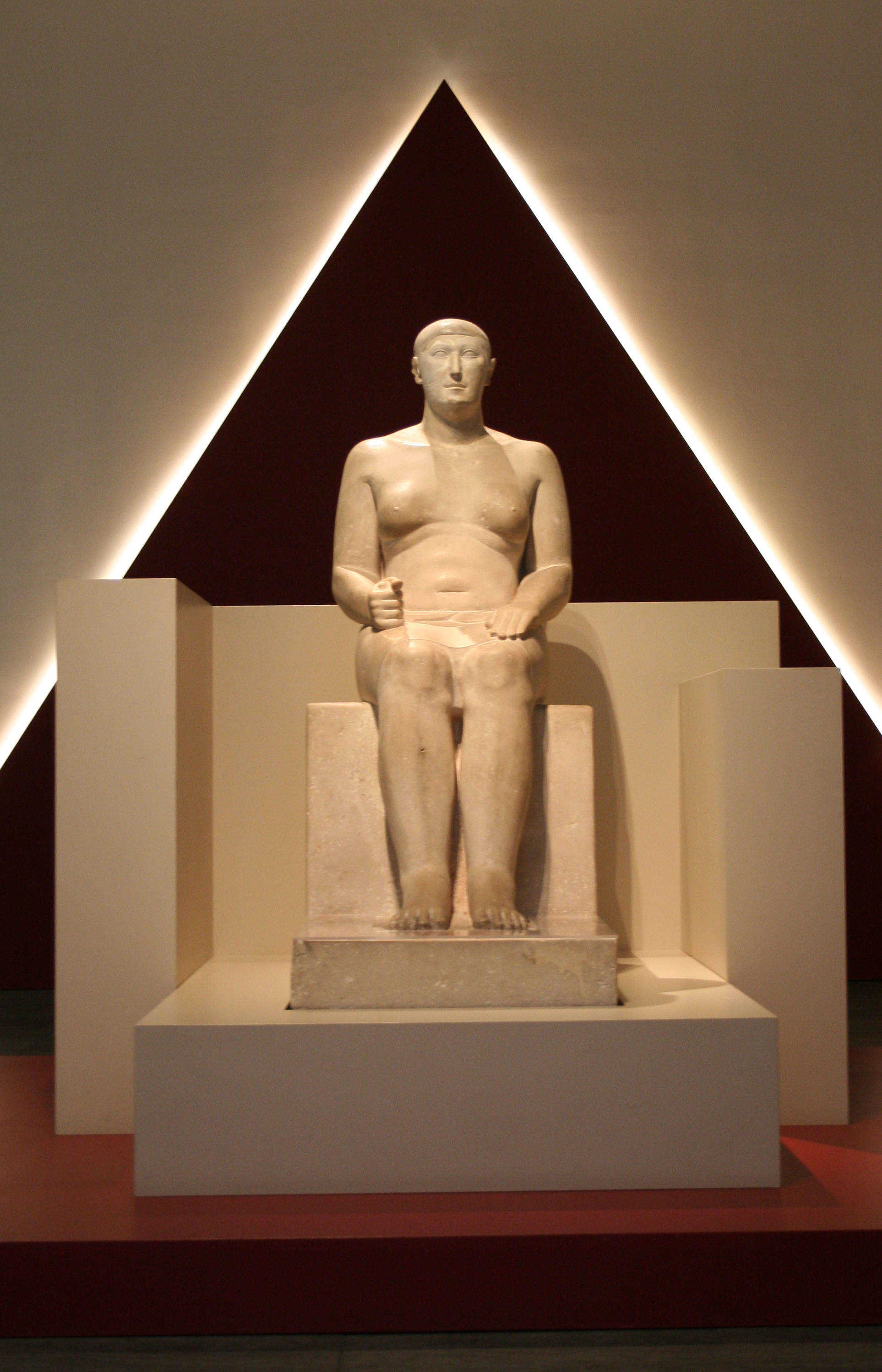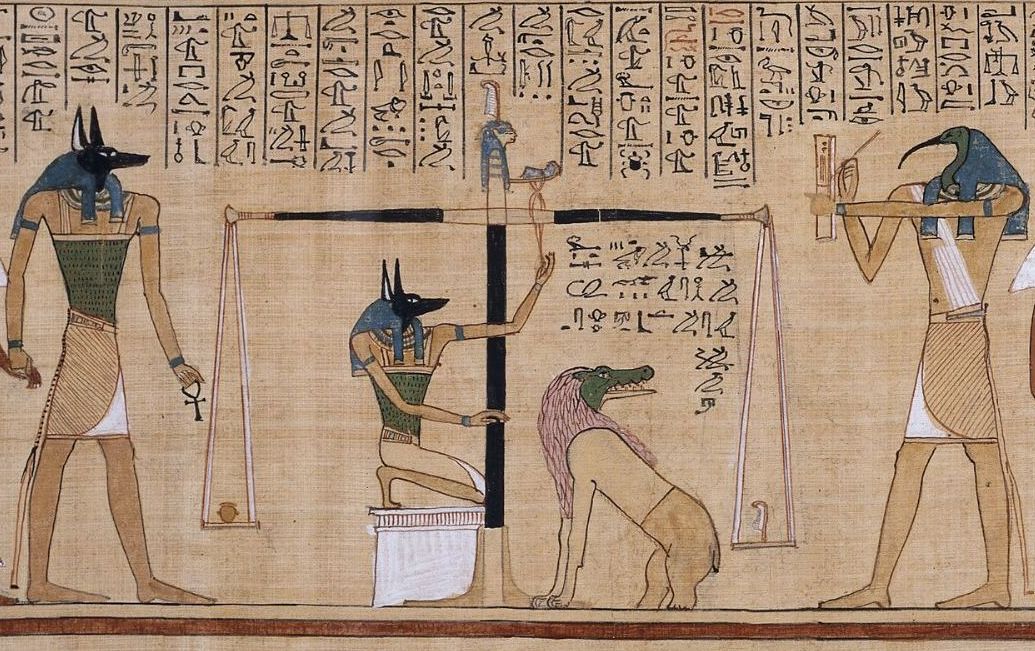|
Nespamedu
Nespamedu was an ancient Egyptian Vizier who officiated during the 25th Dynasty during the reign of Taharqa. Nespamedu followed his father Nespaqashuty C as vizier. Biography Nespamedu was the son of the Vizier Nespaqashuty C and his wife Takhaenbast. Nespamedu's wife was the Chief attendant of the Divine Adoratrice of Amun, Iretrau (TT390) and they had a son named Nespaqashuty (D), named after his grandfather. Burial Nespamedu was buried in Abydos, unlike his wife Iretrau, and his son the Vizier Nespaqashuty D, who had tombs in Thebes. Jean Li, Women, Gender and Identity in Third Intermediate Period Egypt: The Theban Case Study, Taylor & Francis, 2017, Nespamedu was buried in tomb D57 in Abydos, and two magical bricks from this tomb are now in the Oriental Institute Museum in Chicago. One brick had an indentation where an Anubis jackal figure would have rested (OIM 6330), while another brick would have held a Djed pillar (OIM 6401). Both bricks were made out of clay mixe ... [...More Info...] [...Related Items...] OR: [Wikipedia] [Google] [Baidu] |
Nespaqashuty C
Nespaqashuty C was an ancient Egyptian Vizier who officiated during the early 25th Dynasty, during the reign of pharaoh Shebitku. Being the "Vizier of the South", he resided and officiated from Thebes, in Upper Egypt. Nespaqashuty is known from two small magical bricks found in tomb D13 in Abydos. Nespaqashuty C is the father of the Vizier Nespamedu Nespamedu was an ancient Egyptian Vizier who officiated during the 25th Dynasty during the reign of Taharqa. Nespamedu followed his father Nespaqashuty C as vizier. Biography Nespamedu was the son of the Vizier Nespaqashuty C and his wife Takh ... and the grandfather of Vizier Nespaqashuty D. Nespaqashuty was married to the lady Takhaenbast and also had a daughter of that same name.Anthony Leahy, Two Late Period Stelae in the Fitzwilliam Museum, Studien zur Altägyptischen Kultur, Bd. 8 (1980), pp. 169-180 References Ancient Egyptian viziers People of the Twenty-fifth Dynasty of Egypt {{AncientEgypt-bio-stub ... [...More Info...] [...Related Items...] OR: [Wikipedia] [Google] [Baidu] |
Vizier (Ancient Egypt)
The vizier () was the highest official in ancient Egypt to serve the pharaoh (king) during the Old, Middle, and New Kingdoms. Vizier is the generally accepted rendering of ancient Egyptian , etc., among Egyptologists. The ''Instruction of Rekhmire'' (''Installation of the Vizier''), a New Kingdom text, defines many of the duties of the , and lays down codes of behavior. The viziers were often appointed by the pharaoh. During the 4th Dynasty and early 5th Dynasty, viziers were exclusively drawn from the royal family; from the period around the reign of Neferirkare Kakai onwards, they were chosen according to loyalty and talent or inherited the position from their fathers. Responsibilities The viziers were appointed by the pharaohs and often belonged to a pharaoh's family. The vizier's paramount duty was to supervise the running of the country, much like a prime minister. At times this included small details such as sampling the city's water supply. All other lesser supervis ... [...More Info...] [...Related Items...] OR: [Wikipedia] [Google] [Baidu] |
TT390
The Theban Tomb TT390 is located in South El-Assasif, part of the Theban Necropolis, on the west bank of the Nile, opposite to Luxor. It is the burial place of the ancient Egyptian female scribe and Chief attendant of the Divine Adoratrice of Amun, Nitocris I, Irterau. Irterau lived during the reign of Psamtik I She was the daughter of the Divine Father of Amun Ipwer and his wife Tashaiu. In the court of the tomb her grandfather Zeho is also mentioned. Zeho was also a Divine Father of Amun. Irterau was the wife of Vizier Nespamedu who was buried in Abydos and the mother of the Vizier Nespakashuty D who was buried in TT312.Jean Li, Women, Gender and Identity in Third Intermediate Period Egypt: The Theban Case Study, Taylor & Francis, 2017, TT390 was first discovered in 1820 by Wilkinson, Hey and Burton, then by Lepsius; it was reopened in 2001. See also * List of Theban tombs The Theban Necropolis is located on the west bank of the Nile, opposite Luxor, in Egypt. As well ... [...More Info...] [...Related Items...] OR: [Wikipedia] [Google] [Baidu] |
25th Dynasty
The Twenty-fifth Dynasty of Egypt (notated Dynasty XXV, alternatively 25th Dynasty or Dynasty 25), also known as the Nubian Dynasty, the Kushite Empire, the Black Pharaohs, or the Napatans, after their capital Napata, was the last dynasty of the Third Intermediate Period of Egypt that occurred after the Nubians, Nubian invasion. The 25th dynasty was a line of pharaohs who originated in the Kingdom of Kush, located in present-day northern Sudan and Upper Egypt. Most of this dynasty's kings saw Napata as their spiritual homeland. They reigned in part or all of Ancient Egypt for nearly a century, from 744 to 656 BC. The 25th dynasty was highly Egyptianized, using the Egyptian language and writing system as their medium of record and exhibiting an unusual devotion to Egypt's religious, artistic, and literary traditions. Earlier scholars have ascribed the origins of the dynasty to immigrants from Egypt, particularly the Egyptian Amun priests. The third intermediate-period Egypt ... [...More Info...] [...Related Items...] OR: [Wikipedia] [Google] [Baidu] |
Abydos, Egypt
Abydos ( ar, أبيدوس, Abīdūs or ; Sahidic cop, Ⲉⲃⲱⲧ ') is one of the oldest cities of ancient Egypt, and also of the eighth nome in Upper Egypt. It is located about west of the Nile at latitude 26° 10' N, near the modern Egyptian towns of El Araba El Madfuna and El Balyana. In the ancient Egyptian language, the city was called Abdju (''ꜣbḏw'' or ''AbDw''). The English name ''Abydos'' comes from the Greek , a name borrowed by Greek geographers from the unrelated city of Abydos on the Hellespont. Considered one of the most important archaeological sites in Egypt, the sacred city of Abydos was the site of many ancient temples, including Umm el-Qa'ab, a royal necropolis where early pharaohs were entombed. These tombs began to be seen as extremely significant burials and in later times it became desirable to be buried in the area, leading to the growth of the town's importance as a cult site. Today, Abydos is notable for the memorial temple of Seti I, ... [...More Info...] [...Related Items...] OR: [Wikipedia] [Google] [Baidu] |
Taharqa
Taharqa, also spelled Taharka or Taharqo (Egyptian: 𓇿𓉔𓃭𓈎 ''tꜣ-h-rw-k'', Akkadian: ''Tar-qu-u2'', , Manetho's ''Tarakos'', Strabo's ''Tearco''), was a pharaoh of the Twenty-fifth Dynasty of Egypt and qore (king) of the Kingdom of Kush (present day Sudan), from 690 to 664 BC. He was one of the " Kushite Pharaohs" who ruled over Egypt for nearly a century. Early life Taharqa was the son of Piye, the Nubian king of Napata who had first conquered Egypt. Taharqa was also the cousin and successor of Shebitku. The successful campaigns of Piye and Shabaka paved the way for a prosperous reign by Taharqa. Ruling period Taharqa's reign can be dated from 690 BC to 664 BC. Evidence for the dates of his reign is derived from the Serapeum stele, catalog number 192. This stela records that an Apis bull born and installed (fourth month of Season of the Emergence, day 9) in year 26 of Taharqa died in Year 20 of Psamtik I (4th month of Shomu, day 20), having li ... [...More Info...] [...Related Items...] OR: [Wikipedia] [Google] [Baidu] |
Divine Adoratrice Of Amun
The Divine Adoratrice of Amun (Egyptian: '' dwꜣt nṯr n jmn'') was a second title – after God's Wife of Amun – created for the chief priestess of the ancient Egyptian deity Amun. During the first millennium BCE, when the holder of this office exercised her largest measure of influence, her position was an important appointment facilitating the transfer of power from one pharaoh to the next, when his daughter was adopted to fill it by the incumbent office holder. The Divine Adoratrice ruled over the extensive temple duties and domains, controlling a significant part of the ancient Egyptian economy. History God's Wife of Amun, a title for a similar office of the high priestess, originated as a title held by a daughter of the High Priest of Amun during the reign of Hatshepsut and continued as an important office while the capital of Egypt remained in Thebes. Later, the added title Divine Adoratrice of Amun can be seen to accompany a resurgence of the title God's Wife of ... [...More Info...] [...Related Items...] OR: [Wikipedia] [Google] [Baidu] |
Anubis
Anubis (; grc, Ἄνουβις), also known as Inpu, Inpw, Jnpw, or Anpu in Ancient Egyptian () is the god of death, mummification, embalming, the afterlife, cemeteries, tombs, and the Underworld, in ancient Egyptian religion, usually depicted as a canine or a man with a canine head. Like many ancient Egyptian deities, Anubis assumed different roles in various contexts. Depicted as a protector of graves as early as the First Dynasty (c. 3100 – c. 2890 BC), Anubis was also an embalmer. By the Middle Kingdom (c. 2055–1650 BC) he was replaced by Osiris in his role as lord of the underworld. One of his prominent roles was as a god who ushered souls into the afterlife. He attended the weighing scale during the "Weighing of the Heart", in which it was determined whether a soul would be allowed to enter the realm of the dead. Anubis is one of the most frequently depicted and mentioned gods in the Egyptian pantheon, however, no relevant myth involved him. Anubis was depict ... [...More Info...] [...Related Items...] OR: [Wikipedia] [Google] [Baidu] |
Djed
The ''djed,'' also ''djt'' ( egy, ḏd 𓊽, Coptic ''jōt'' "pillar", anglicized /dʒɛd/) is one of the more ancient and commonly found symbols in ancient Egyptian religion. It is a pillar-like symbol in Egyptian hieroglyphs representing stability. It is associated with the creator god Ptah and Osiris, the Egyptian god of the afterlife, the underworld, and the dead. It is commonly understood to represent his spine. Myth In the Osiris myth, Osiris was killed by Set by being tricked into a coffin made to fit Osiris exactly. Set then had the coffin with the now deceased Osiris flung into the Nile. The coffin was carried by the Nile to the ocean and on to the city of Byblos in Lebanon. It ran aground and a sacred tree took root and rapidly grew around the coffin, enclosing the coffin within its trunk. The king of the land, intrigued by the tree's quick growth, ordered the tree cut down and installed as a pillar in his palace, unaware that the tree contained Osiris's body. Meanwhi ... [...More Info...] [...Related Items...] OR: [Wikipedia] [Google] [Baidu] |
Book Of The Dead
The ''Book of the Dead'' ( egy, 𓂋𓏤𓈒𓈒𓈒𓏌𓏤𓉐𓂋𓏏𓂻𓅓𓉔𓂋𓅱𓇳𓏤, ''rw n(y)w prt m hrw(w)'') is an ancient Egyptian funerary text generally written on papyrus and used from the beginning of the New Kingdom (around 1550 BCE) to around 50 BCE. The original Egyptian name for the text, transliterated ''rw nw prt m hrw'', is translated as ''Book of Coming Forth by Day'' or ''Book of Emerging Forth into the Light''. "Book" is the closest term to describe the loose collection of texts consisting of a number of magic spells intended to assist a dead person's journey through the ''Duat'', or underworld, and into the afterlife and written by many priests over a period of about 1,000 years. Karl Richard Lepsius introduced for these texts the German name ''Todtenbuch'' (modern spelling ''Totenbuch''), translated to English as Book of the Dead. The ''Book of the Dead'', which was placed in the coffin or burial chamber of the deceased, was part of a trad ... [...More Info...] [...Related Items...] OR: [Wikipedia] [Google] [Baidu] |


.jpg)



